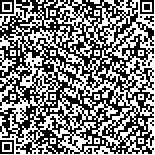本文已被:浏览 1013次 下载 581次
Received:April 13, 2018 Published Online:September 20, 2018
Received:April 13, 2018 Published Online:September 20, 2018
中文摘要: 目的 探讨急性心肌梗死左冠脉闭塞患者急诊介入治疗中,行血栓预抽吸术的使用情况,并与传统球囊预扩张术进行对比。方法 选择2015年至2017年入住粤北人民医院并行急诊介入治疗的急性ST段抬高型心肌梗死(STEMI)患者50例,患者均为左冠脉急性闭塞病变。随机分两组,血栓预抽吸术组25例经皮冠脉介入治疗(PCI)术前给以血栓预抽吸术,球囊预扩张组25例PCI术前常规行球囊预扩张,比较两种介入治疗方法的疗效。结果 50例患者经急诊PCI术,冠脉再通率100%,手术后存活率100%。从冠脉造影术后行球囊预扩张或血栓预抽吸到冠脉恢复血流所需要的操作时间,球囊预扩张组略低于血栓预抽吸组,但无统计学差异[(12.8±4.2)min vs (13.2±4.3)min,P>0.05]。术中X射线曝光剂量血栓预抽吸组优于球囊预扩张组[(276.0±37.0)mGy vs (369.0±47.0)mGy,P<0.01]。总体手术操作时间血栓预抽吸组低于球囊预扩张组[(18.3±3.2)min vs (23.8±4.5)min,P<0.01]。血栓抽吸组患者术后校正的TIMI帧数低于球囊预扩张组[(28.7±11.5)帧/s vs (37.5±13.7)帧/s,P<0.05]。血栓预抽吸组术后30 min心绞痛缓解率高于球囊预扩张组(96.0% vs 68.0%,P<0.05);90 min心电图ST段完全回落率两组间无统计学差异(P>0.05)。术后1周、3个月、12个月的主要心血管不良事件(MACE)发生率两组间无统计学差异(P>0.05)。结论 左冠脉急性闭塞病变患者,急诊PCI治疗中,预先行血栓抽吸术,有助于改善PCI术后血流再灌注,减少X射线曝光时间,减少术中并发症。
中文关键词: 急性ST段抬高型心肌梗死 经皮冠状动脉介入治疗 血栓抽吸导管 球囊预扩张
Abstract:Objective To investigate the use condition of thrombus pre-aspiration in emergency intervention therapy for the occlusion of left coronary artery in patients with acute myocardial and compare with traditional balloon pre-dilatationto. Methods Fifty acute ST segment elevation myocardial infarction (STEMI) patients with acute occlusion of left coronary artery who admitted in Yuebei People Hospital and underwent emergency intervention therapy from 2015 to 2017 were selected. The patients were randomly divided into two groups (n=25 each):thrombus pre-aspiration group [thrombus pre-aspiration was given before percutaneous coronary intervention (PCI)] and balloon pre-dilatation group (conventional balloon pre-dilatation was given before PCI). The effect of the two methods of interventional therapy was compared. Results Fifty patients were successfully rescued by emergency intervention procedure. The coronary recanalization rate was 100%, and the survival rate after operation was 100%. The procedure time needed from performing balloon pre-dilatation or thrombus pre-aspirationartery after coronary angiography to restoring the blood flow of coronary artery in balloon pre-dilatation group was slightly less than that in thrombus pre-aspiration group, but there was no significant difference between two groups [(12.8±4.2)min vs (13.2±4.3)min, P>0.05]. X ray exposure dose in thrombus pre-aspiration group was significantly less than that in balloon pre-dilatation group [(276.0±37.0)mGy vs (369.0±47.0)mGy, P<0.05]. Total operative time in thrombus pre-aspiration group was significantly less than that in balloon pre-dilatation group [(18.3±3.2) min vs (23.8±4.5)min, P<0.05]. Corrected TIMI (thrombolysis in myocardial infarction) frame count (CTFC) in thrombus pre-aspiration group was significantly less than that in balloon pre-dilatation group [(28.7±11.5) frame/s vs (37.5±13.7) frame/s, P<0.05]. Remission rate of angina pectoris at 30-min after operation in thrombus pre-aspiration group was significantly higher than that in balloon pre-dilatation group(96.0% vs 68.0%, P<0. 05). There was no significant difference in ST-segment complete resolution rate 30-min after operation between two groups (P>0.05). There were no significantly differences in major adverse cardiovascular events (MACE) at 1-week, 3-month and 12-month after operation between two groups(all P>0.05). Conclusion Thethrombus pre-aspiration in emergency intervention therapy contributes to the improvement of blood flow re-perfusion after PCI, the reduction of X ray exposure time, the improvement of patients' prognosis and the reduction of intraoperative complications in patients with acute occlusion of left coronary artery.
keywords: Acute ST segment elevation myocardial infarction Percutaneous coronary intervention Thrombus aspiration catheter Balloon pre-dilatation
文章编号: 中图分类号:R 541.4 文献标志码:A
基金项目:2016年韶关市卫生计生科研项目(Y16036)
引用文本:
